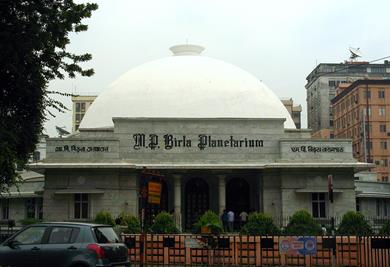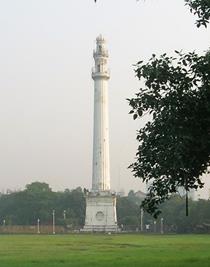Job Charnock's Kolkata (জব চার্ণকের কলকাতা)
….. on the path of Sri Ramkrishna & Vivekananda (3-4 days)
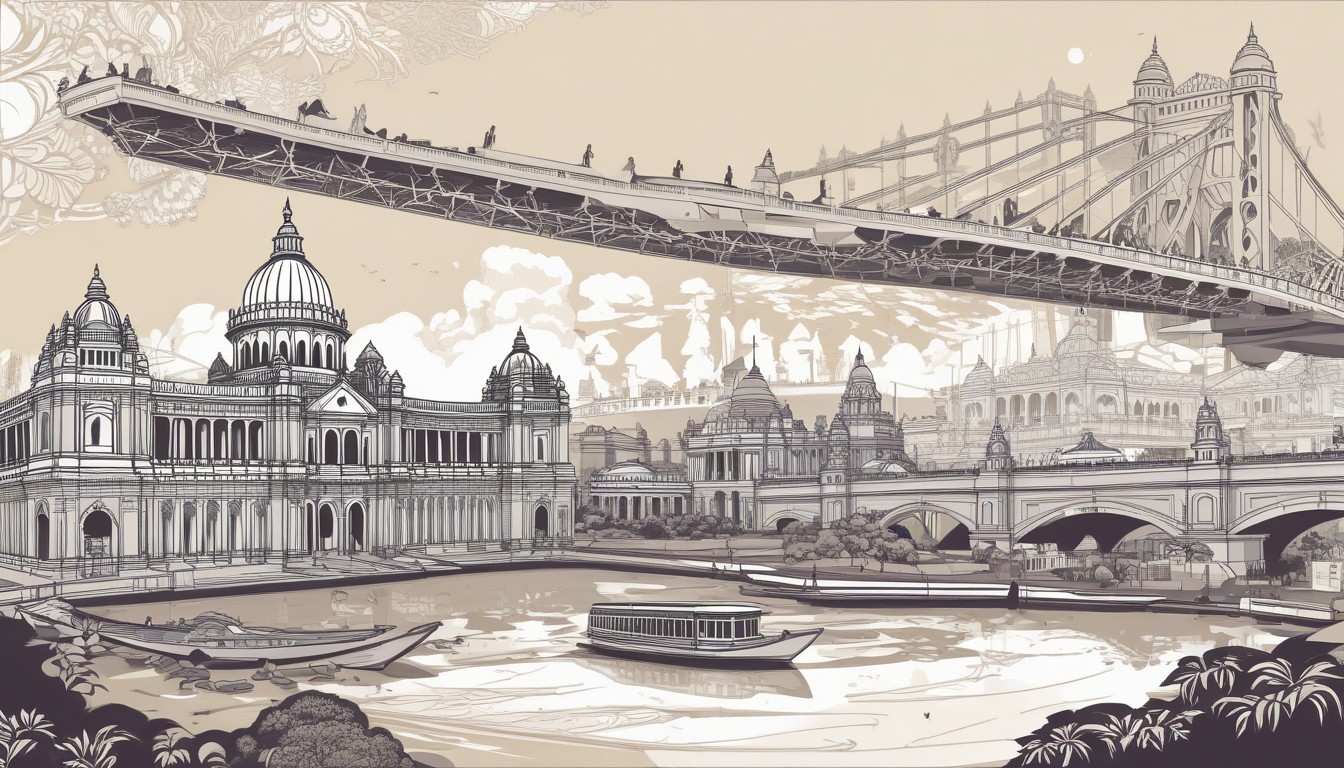
The Victoria Memorial is a grand marble monument situated on the Maidan in Central Kolkata, with its entrance facing the Queen’s Way. Constructed between 1906 and 1921 by the Government of India, this majestic structure serves as a tribute to Queen Victoria, who held the title of Empress of India from 1876 to 1901.
As the largest monument dedicated to a monarch globally, the Victoria Memorial spans an impressive 64 acres of meticulously landscaped gardens. Presently administered by the Ministry of Culture, Government of India, it has been transformed into a museum, offering a glimpse into the rich history of the colonial era.
The architectural design of the memorial prominently reflects the Anglo-Indian style prevalent during the imperial period. Over the years, it has become one of the city’s most popular attractions, drawing visitors with its historical significance and captivating aesthetics. The museum within the Victoria Memorial is a treasure trove of artifacts and exhibits, providing a comprehensive look into the bygone era of British rule in India. The Victoria Memorial is primarily known for its architectural grandeur, lush gardens, and its role as a museum showcasing artifacts from the colonial period. Also in the evenings particularly in the winter season a chariot ride in and around the Maidan area starting from the Northern gate of Victoria Memorial is every tourists desire
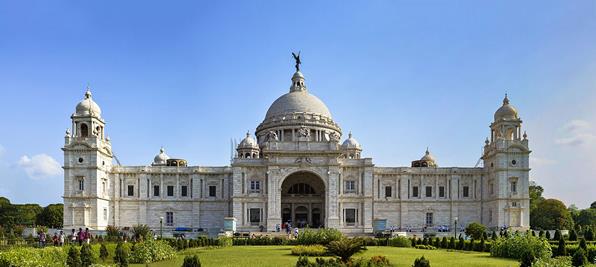
As the largest monument dedicated to a monarch globally, the Victoria Memorial spans an impressive 64 acres of meticulously landscaped gardens. Presently administered by the Ministry of Culture, Government of India, it has been transformed into a museum, offering a glimpse into the rich history of the colonial era.
The architectural design of the memorial prominently reflects the Anglo-Indian style prevalent during the imperial period. Over the years, it has become one of the city’s most popular attractions, drawing visitors with its historical significance and captivating aesthetics. The museum within the Victoria Memorial is a treasure trove of artifacts and exhibits, providing a comprehensive look into the bygone era of British rule in India. The Victoria Memorial is primarily known for its architectural grandeur, lush gardens, and its role as a museum showcasing artifacts from the colonial period. Also in the evenings particularly in the winter season a chariot ride in and around the Maidan area starting from the Northern gate of Victoria Memorial is every tourists desire

Constructed in 1841 during the British Raj along the Kolkata bank of the Hooghly River, Prinsep Ghat stands as a historical gem. The Palladian porch, a tribute to the distinguished Anglo-Indian scholar James Prinsep, was designed by W. Fitzgerald and completed in 1843. Nestled between the Water Gate and the St George’s Gate of Fort William, the monument showcases intricate Greek and Gothic inlays and was meticulously restored by the state’s public works department in November 2001, ensuring its continued splendor.
Prinsep Ghat, steeped in history, once served as the preferred jetty for all royal British entourages during its early years. Today, it has evolved into one of Kolkata’s oldest and most cherished recreational spots. Enthusiasts flock to the ghat on weekends to indulge in boating along the river, take leisurely strolls on the picturesque banks, and savor local delicacies from charming stalls. A 2-kilometer stretch of the riverfront, beautified with illuminated gardens, pathways, and renovated ghats, extending from Prinsep Ghat to Babughat, was inaugurated in May 2012. Not only does Prinsep Ghat offer a delightful retreat, but it has also set the stage for Bollywood magic, with scenes from the film “Parineeta” shot on its iconic ghats. Additionally, the site boasts a dedicated railway station, PPGT, part of the Kolkata Circular Railway maintained by Eastern Railway, and nearby, the Man-O-War jetty, managed by Kolkata Port Trust, commemorates the vital role played by the port in World War II and is primarily utilized by the Indian Navy.
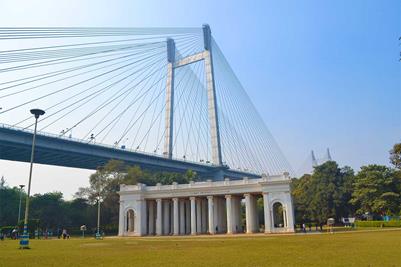
Prinsep Ghat, steeped in history, once served as the preferred jetty for all royal British entourages during its early years. Today, it has evolved into one of Kolkata’s oldest and most cherished recreational spots. Enthusiasts flock to the ghat on weekends to indulge in boating along the river, take leisurely strolls on the picturesque banks, and savor local delicacies from charming stalls. A 2-kilometer stretch of the riverfront, beautified with illuminated gardens, pathways, and renovated ghats, extending from Prinsep Ghat to Babughat, was inaugurated in May 2012. Not only does Prinsep Ghat offer a delightful retreat, but it has also set the stage for Bollywood magic, with scenes from the film “Parineeta” shot on its iconic ghats. Additionally, the site boasts a dedicated railway station, PPGT, part of the Kolkata Circular Railway maintained by Eastern Railway, and nearby, the Man-O-War jetty, managed by Kolkata Port Trust, commemorates the vital role played by the port in World War II and is primarily utilized by the Indian Navy.

Situated in Belvedere Estate, Alipore, Kolkata, the National Library of India stands as the country’s largest repository of knowledge and public records. Operating under the Ministry of Culture, Government of India, the library is currently overseen by Dr. Prof. Ajay Pratap Singh, who has been serving as the Director General (additional) since 2020. This esteemed institution is dedicated to the collection, dissemination, and preservation of printed materials originating within India, boasting an extensive collection exceeding 2.5 million books and records, making it the largest of its kind in the nation.
Originally the residence of the Governor General of Bengal and India during the early days of British rule, the National Library has a rich historical backdrop. Over time, it transitioned into the residence of the Lt. Governor of Bengal when the Governor General’s and later the Viceroy’s residence moved to the present-day Governor House.
The National Library’s inception resulted from the amalgamation of the public library with the Imperial Library and several government libraries. Established in 1953, the Imperial Library, which was previously open to the public, housed both British and Indian titles. The library’s vast collection spans books, periodicals, and titles in nearly all Indian languages, with special collections encompassing at least fifteen languages. Notably, the Hindi department boasts books dating back to the nineteenth century, including the first-ever books printed in that language. The library’s treasures include 86,000 maps and 3,200 manuscripts, further solidifying its status as a paramount institution for scholarly pursuits and cultural preservation.
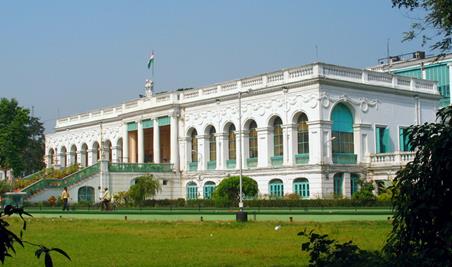
Originally the residence of the Governor General of Bengal and India during the early days of British rule, the National Library has a rich historical backdrop. Over time, it transitioned into the residence of the Lt. Governor of Bengal when the Governor General’s and later the Viceroy’s residence moved to the present-day Governor House.
The National Library’s inception resulted from the amalgamation of the public library with the Imperial Library and several government libraries. Established in 1953, the Imperial Library, which was previously open to the public, housed both British and Indian titles. The library’s vast collection spans books, periodicals, and titles in nearly all Indian languages, with special collections encompassing at least fifteen languages. Notably, the Hindi department boasts books dating back to the nineteenth century, including the first-ever books printed in that language. The library’s treasures include 86,000 maps and 3,200 manuscripts, further solidifying its status as a paramount institution for scholarly pursuits and cultural preservation.

St. Paul’s Cathedral, located in Kolkata, West Bengal, India, is a prominent Anglican cathedral affiliated with the Church of North India (CNI). Renowned for its Gothic architecture, the cathedral is dedicated to Paul the Apostle and serves as the seat of the Diocese of Calcutta. Its construction began with the laying of the cornerstone in 1839, and the edifice was completed in 1847. Notably, St. Paul’s Cathedral is considered the largest church in Kolkata and holds the distinction of being the first Anglican cathedral in Asia. It also stands as the first newly constructed cathedral in the overseas territories of the British Empire.
Situated on Cathedral Road, strategically chosen on the “island of attractions,” the cathedral was designed to accommodate the expanding European community in Calcutta during the 1800s. The architectural style of the cathedral is termed “Indo-Gothic,” a fusion of Gothic design elements tailored to suit the climatic conditions of India. Following the significant earthquakes of 1897 and 1934, which inflicted considerable damage on Calcutta, the cathedral underwent reconstruction based on a revised design.
Within the cathedral complex, a library is situated over the western porch, and there is also a display featuring plastic art forms and memorabilia. The church’s burial grounds include the tomb of Bishop Daniel Wilson, the founder of the cathedral, and another notable burial is that of John Paxton Norman, an acting Chief Justice assassinated on the steps of Kolkata Town Hall in 1871. St. Paul’s Cathedral stands as both a religious and architectural landmark, reflecting the historical and cultural heritage of Kolkata.
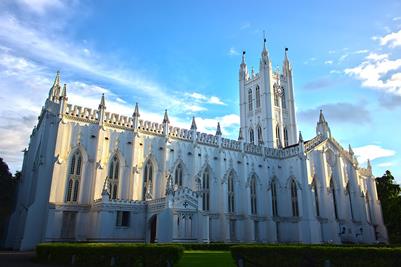
Situated on Cathedral Road, strategically chosen on the “island of attractions,” the cathedral was designed to accommodate the expanding European community in Calcutta during the 1800s. The architectural style of the cathedral is termed “Indo-Gothic,” a fusion of Gothic design elements tailored to suit the climatic conditions of India. Following the significant earthquakes of 1897 and 1934, which inflicted considerable damage on Calcutta, the cathedral underwent reconstruction based on a revised design.
Within the cathedral complex, a library is situated over the western porch, and there is also a display featuring plastic art forms and memorabilia. The church’s burial grounds include the tomb of Bishop Daniel Wilson, the founder of the cathedral, and another notable burial is that of John Paxton Norman, an acting Chief Justice assassinated on the steps of Kolkata Town Hall in 1871. St. Paul’s Cathedral stands as both a religious and architectural landmark, reflecting the historical and cultural heritage of Kolkata.

The Indian Museum, formerly known as the Imperial Museum of Calcutta before independence, stands as a monumental institution in Central Kolkata, West Bengal, India. Established in 1814 by the Asiatic Society of Bengal, it holds several distinctions, making it a prominent cultural and scientific hub:
As the ninth oldest museum globally and the oldest and largest in India and Asia, the Indian Museum boasts a rich history dating back to the colonial era.
Founded by the Asiatic Society of Bengal, the museum’s inaugural curator was Nathaniel Wallich, a Danish botanist with a passion for natural sciences.
The museum’s extensive collections encompass a wide range of artifacts, including antiques, armor, ornaments, fossils, skeletons, mummies, and Mughal paintings. These items showcase the cultural and historical diversity of the region.
The Indian Museum serves as a testament to India’s rich and diverse heritage, providing a comprehensive exploration of cultural and scientific artifacts.
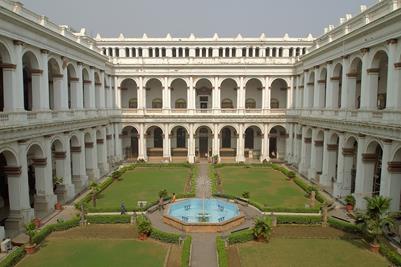
As the ninth oldest museum globally and the oldest and largest in India and Asia, the Indian Museum boasts a rich history dating back to the colonial era.
Founded by the Asiatic Society of Bengal, the museum’s inaugural curator was Nathaniel Wallich, a Danish botanist with a passion for natural sciences.
The museum’s extensive collections encompass a wide range of artifacts, including antiques, armor, ornaments, fossils, skeletons, mummies, and Mughal paintings. These items showcase the cultural and historical diversity of the region.
The Indian Museum serves as a testament to India’s rich and diverse heritage, providing a comprehensive exploration of cultural and scientific artifacts.


